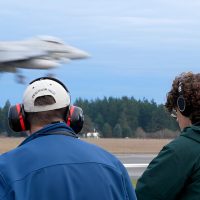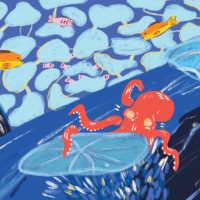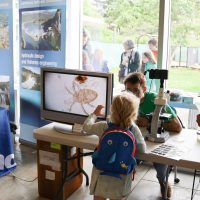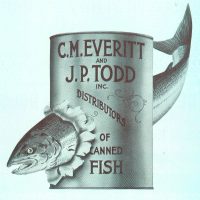Filter Results
Grist visits the Wood Lab: Nature can’t run without parasites, so what happens when they start to disappear?
As part of a video series profiling the science and scientists behind some of the environment’s most unexpected research, Grist visited the Wood Lab at SAFS, to find out about Chelsea Wood’s parasite research.
Read moreNavy Growler jet noise over Whidbey Island could impact 74,000 people’s health
According to new research published by SAFS grad student, Giordano Jacuzzi, military aircraft noise from Naval Air Station Whidbey Island presents a substantial risk to public health.
Read moreChris Mantegna honored in 2024 Husky 100
Part of the SAFS PhD program, Chris Mantegna has been named as one of the Husky 100 for 2024. Students are chosen for actively connecting what happens inside and outside of the classroom and applying this learning to make a difference on campus, their communities, and for the future.
Read moreLeave the imported shrimp, take the local bivalves: sustainable seafood choices
SAFS Assistant Professor, Jessica Gephart, speaks to KUOW’s Kim Malcolm about her research and why seafood choices matter.
Read moreFrom the classroom to the coastline: spotlighting UW’s School of Aquatic and Fishery Science
The Daily UW features the degrees offered at SAFS, which is centered on the belief that students must experience the environments and species they’re studying.
Read moreEcologists: don’t lose touch with the joy of fieldwork
Chris Mantegna writes a Nature World View piece, saying amid the data deluge provided by lab-based techniques, such as environmental-DNA analysis, true connection still comes only in the outdoors.
Read moreDiving into aquatic science: Open House returns on May 18
Bringing aquatic science to life for the people of Seattle for the sixth time, the UW Aquatic Sciences Open House returns for a free, family-friendly day of fun on Saturday 18 May. Open to everyone – from toddlers to teenagers to adults – we’re showcasing the amazing breadth of wet sciences at the University of Washington.
Kicking off at 10am, we’ve got fan favorites like exploring the live aquarium tanks which are home starfish, telling the difference between native versus invasive crabs, and peering through microscopes to see tiny marine organisms.
What four decades of canned salmon reveal about marine food webs
Alaskan waters are a critical fishery for salmon, and scientists want to know the impact of climate change. As a UW SAFS doctoral student, Natalie Mastick investigated Alaskan marine food webs using an unorthodox source: old cans of salmon, from four species all caught over a 42-year period.
Read moreCombining ecology with spatial data: New book delivers toolbox for ecologists
In a new book providing a guided walkthrough and toolbox to conduct population and ecosystem modeling at high-spatial resolution, James Thorson (SAFS alum and affiliate faculty, and Statistical Ecologist at NOAA) has co-authored Spatio-Temporal Models for Ecologists with Kasper Kristensen. Coming up with the idea for the book during a meeting at SAFS almost a decade ago, we sat down with James to find out more about why it’s a useful tool for ecologists.
Read moreLetting nature be nature: restoring Puget Sound’s shoreline
Stretching from Admiralty Inlet to the city of Olympia, Puget Sound has 1330 miles of shoreline, of which 25% is armored. In a new paper, SAFS Research Scientist Simone Des Roches, led a team studying the impact of armor removal and other restoration activities on shorelines through time in Puget Sound locations.
Read more








